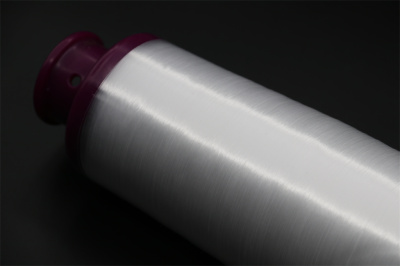
Accelerating the Carbon Fiber Industry: Exploring the Leaders in the New Material Domain
2024-03-22 10:11
Carbon fiber stands as a benchmark in the material science field, hailed as the "King of New Materials" and "Black Gold" for its exceptional performance across various industries. This inorganic polymer fiber, derived from organic fibers through high-temperature pyrolysis, not only boasts a strength 5 to 8 times that of steel but also weighs only a quarter as much. Its lightweight, high strength, high-temperature resistance, and corrosion resistance make it an ideal material for applications in aviation, aerospace, construction, and energy, among others.
With the rapid growth of wind power, photovoltaics, and other new energy industries, China's demand for carbon fiber has steadily increased.

Overview of Carbon Fiber Industry Development
The outstanding performance of carbon fiber is attributed to its unique carbon backbone structure, making it an indispensable strategic resource for the national economy and defense security. In high-end applications, carbon fiber plays an irreplaceable role due to its high specific strength, high specific stiffness, and excellent resistance to corrosion and fatigue.
Carbon fiber is typically not used alone but combined with resins and other matrices to form composite materials, further extending its range of applications. The preparation technology of carbon fiber composites is a key factor in its development.
These composites have an extremely low density, about half that of aluminum alloys and one-fifth that of steel. Thus, components made from carbon fiber composites are very light, weighing only 15%-30% of those made from traditional aluminum alloy materials.
For instance, BMW's introduction of carbon fiber-reinforced plastic materials in its 2014 electric vehicles, i3 and i8, marked a new chapter for carbon fiber in the mass production of automobiles. In the field of electric vehicles, where lightweight, high performance, and energy efficiency are pursued, carbon fiber composite materials are expected to play an even greater role.
Analysis of the Carbon Fiber Industry Chain
From an industry chain perspective, carbon fiber production starts with extracting fossil fuels as raw materials, followed by a series of chemical reactions and processes to ultimately convert them into carbon fibers. These fibers are further processed into carbon fiber fabrics, prepregs (also known as intermediates), and final composite material products.
The premise for preparing high-performance carbon fiber is high-quality precursor fibers, but the related polymerization, spinning, carbonization, and oxidation processes are challenging. Moreover, the transformation of carbon fiber precursors into actual composite material components involves a critical step: composite molding.
In this process, carbon fiber needs to be combined with a resin matrix through specific composite molding techniques to form the final composite material. Mastering this series of processes and technologies is crucial for advancing the development of the carbon fiber industry.
Market Competition and Development Opportunities in Carbon Fiber
The global carbon fiber market has long been dominated by a few countries, such as Japan and the United States, with rich experience and advanced technology in research, production, and sales. Particularly in the small tow market, a few large Japanese companies have taken a leading position.
Since the invention of PAN-based carbon fiber preparation technology in Japan in the mid-20th century, Japan and the United Kingdom have become pioneers in this technology's research and development. Entering the 1980s, with the breakthrough in industrial production of PAN-based carbon fiber, the market entered a new phase of integration and acquisition, forming today's competitive landscape.
In the large tow market, European and American companies have a more distinct advantage, with companies from the USA and Germany almost controlling the entire market. The continuous growth in demand for carbon fiber in wind power, automotive, and commercial aviation sectors has further solidified the leading position of companies from the USA and Japan in the global market.
With the shift in global carbon fiber demand and the rise of Chinese domestic enterprises, domestic substitution has become a new trend. Leading domestic companies, such as Jilin Chemical Fiber, have been increasing their R&D efforts in recent years.
As the process of domestic substitution accelerates, Chinese manufacturers are expected to encounter new development opportunities in the carbon fiber industry.
Conclusion
As the demand for high-performance, lightweight materials continues to grow globally, the carbon fiber market is experiencing vigorous development. Especially in the aerospace field, the application of carbon fiber composites has become a crucial means to enhance the performance of aircraft and reduce energy consumption. In the automotive industry, carbon fiber is increasingly used in manufacturing high-performance sports cars and electric vehicles to improve vehicle efficiency and driving experience.
Moreover, with the growing emphasis on environmental protection and the rapid development of renewable energy, the demand for carbon fiber in the wind power sector is also on the rise.
However, it's worth noting that the development of the carbon fiber industry faces challenges, including the relatively high cost of manufacturing and immature recycling and reuse technologies, which exert certain pressures on the environment. Therefore, reducing manufacturing costs and improving recycling rates are key tasks for the development of the carbon fiber industry.
Overall, as a representative of emerging materials, carbon fiber plays an important role in the domain of new material production, with vast potential for future growth. Its applications are not limited to enhancing the capabilities of high-tech sectors but also include contributing significantly to sustainability and efficiency improvements across various industries. As the world moves towards greener solutions and more efficient energy use, carbon fiber stands at the forefront of this transition, offering innovative solutions that combine performance with environmental responsibility. The continued development and adoption of carbon fiber and its composites are set to redefine industry standards, making lighter, stronger, and more durable products a reality for the global market. This dynamic growth trajectory highlights the importance of ongoing research, investment, and collaboration across the carbon fiber industry to unlock its full potential and address the challenges ahead, ensuring that carbon fiber continues to be a key player in the new material revolution.








